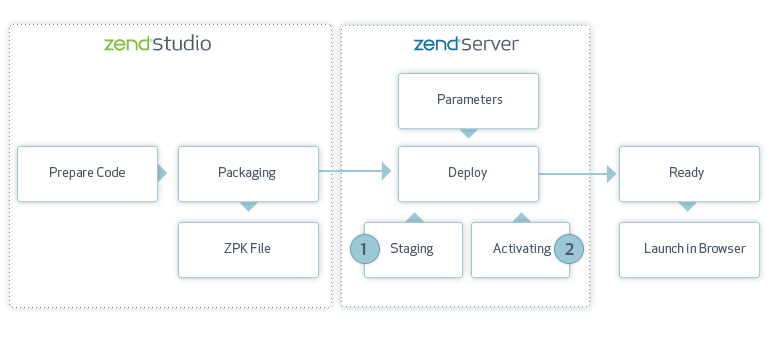Application Deployment
What is Deployment?
Deploying an application is the process of copying, configuring and enabling a specific application to a specific base URL on a target of your choice.
Once the deployment process has finished, the application becomes publicly accessible on the base URL.
The target carries out this two step process by first staging the application, and then activating it after successful staging.
The following chart illustrates the deployment process and the integration between Zend Studio and Zend Server:

Why Use Deployment?
Deployment ensures the end-users have access to a properly functioning version of the Web application you have created.
Working with deployment in Zend Studio standardizes and automates the development process by establishing a consistent form for application production.
Deployment allows you to define the parameters necessary for your application in XML format as part of the application package. The application package includes the application data (source code), and any additional hook scripts you would like to use.
Once deployed, you can modify code and debug the application in update mode, enabling your application to run with the latest changes.
Deployment to Production
Zend Studio allows you to package an application with settings and content optimized for production usage. Using this option, you can easily remove Zend Framework modules, Composer dependencies (require_dev) and local configurations from the application package (.zpk), and include production settings instead. This option can be used directly while deploying an application or when exporting an application pacakge.

